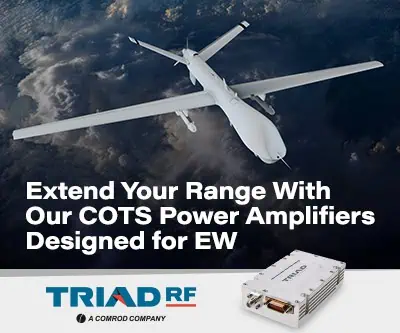Studies are underway at the U.S. Army Research Laboratory, or ARL, to create a ‘super engine’ that could allow military ground vehicles, stationary power generators, and small unmanned aerial vehicles, for example, to operate with the same kind of fuel.
In the late 1980s, the DOD issued its “Single Fuel Forward” policy calling for use of the kerosene-based JP-8 fuel to reduce the significant logistic burden associated with managing and transporting multiple fuels on the battlefield.
But using a single fuel exposes a host of incompatibility issues, namely in lubrication, large variation in Cetane numbers which measure the time period between the start of fuel injection and the start of engine ignition or combustion, and the fact that none of the engines that use JP-8 are designed — including their fuel systems – and calibrated for JP-8, said Chol-Bum “Mike” Kweon, acting team lead of the Engines Team of ARL’s Vehicle Technology Directorate at Aberdeen Proving Ground, Md.
He said this design gap is namely due to the fact that not enough information exists in industry and government on the specific combustion characteristics associated with JP-8’s use in intermittent combustion engines.
“Usually large companies are not willing to develop engines specific for JP-8 because it requires significant effort and funding while the market for the military is relatively small and unstable. Therefore, relatively small companies have been developing JP-8-fueled engines for Unmanned Aerial Vehicles, while diesel engines are used for ground vehicle engines. Small companies do not have the capability to perform basic fundamental research,” Kweon explained
ARL research is bridging that knowledge gap, which could eventually lead to the creation of an engine that operates optimally with JP-8.
“Fuel spray liquid penetration, quenching, vaporization, and mixing characteristics must be precisely understood to properly design combustion chambers and fuel injection systems because a fundamental understanding of fuel spray and combustion is essential in optimizing combustion processes of JP-8-fueled engines to improve fuel efficiency, engine performance and reliability,” Kweon said.
ARL’s Combustion Research Laboratory is a state-of-the-art, high-temperature and high-pressure combustion chamber that opened this summer for fuel spray and combustion research, critical areas of interest Defense-wide to facilitate the basic research and development work necessary for the successful development of JP-8-fueled combustion systems.
ARL is currently collaborating with Army Materiel Systems Analysis Activity to assess a fuel injector that is used in a Caterpillar C7 engine, used in Strykers. Results will define how fuel properties affect the performance of the fuel injection systems that are currently used in ground vehicle engines.
UNIQUE LABORATORY, UNMATCHED IN INDUSTRY
ARL’s vehicle technology research dates back to the early 1980s in gas turbine engines, but when this research area relocated to APG in 2011 from NASA Glenn in Cleveland, Ohio, due to Base Realignment and Closure Activity, ARL broadened its vehicle technology focus to include internal combustion engines. This laboratory is accomplished with the ARL infrastructure fund that was awarded at the end of 2010.
The only combustion lab space of its kind in DoD, the Combustion Research Laboratory will also be used to facilitate the development of heavy fuel injection systems that will ultimately lead to the development of high-efficient UAV engines.
“Currently, there is no ‘robust’ heavy fuel injection system for UAV engines,” said Kweon, who received Master of Science and doctorate degrees from the University of Wisconsin-Madison (UW-Madison), which has a big engine research program in its Engine Research Center. He conducted research on diesel engines, various fuels (diesel, alternative diesel fuels, diesel fuels mixed with gasoline streams, alcohols, etc.), combustion, emissions, speciation of diesel particulate matters, optical diagnostics, etc., as degree requirements.
ARL’s combustion laboratory contains a high-temperature – up to 1,000 Kelvin (K) – and high-pressure – up to 150 bar -combustion chamber that can simulate real engine operating conditions except for fluid motion. This type of combustion chamber allows the investigation and study of uninterrupted spray and combustion processes.
“Currently, this is the only laboratory within DoD that has this capability,” Kweon emphasized.
General Motors, in Warren, Mich., has the first generation of this chamber that has a 100 bar at 1,000 K – and Caterpillar, in Peoria, Ill., has its second generation, which offers 150 bar at 1,000 K.
ARL has a third generation chamber.
The ARL facility also has air and onsite nitrogen supply systems in which we can control oxygen concentration from zero (almost pure nitrogen) to 21 percent (pure air) in the gas mixing system. Through the high-pressure compressor, air, nitrogen, or a mixture of air and nitrogen can be supplied to the combustion chamber at pressures over 300 bar(g) to study spray only, spray and combustion, or to simulate exhaust gas recirculation, or EGR, that is common in current engines.
“However, we use only 150 bar(g) in the combustion chamber because this represents most of turbocharged internal combustion engine operating conditions. Sandia National Laboratories, N.M., and Michigan Technological University have a different type of combustion chamber (i.e., constant volume chamber) that has similar capabilities to the one at ARL in terms of temperature and pressure”.
“The main difference is that the one at ARL is a flow-through type combustion chamber that controls chamber pressure, temperature, and flowrate (very slow compared to fuel injection velocity) at set points in the test section, while the constant volume chamber has varying chamber temperature and pressure as it uses premixed combustion gases. And the injection frequency is much higher for a flow-through chamber than the constant volume chamber. Therefore, we can perform multiple injections per cycle and perform testing much faster in the flow-through chamber than in the constant volume chamber,” said Kweon, who was formerly employed at General Motors R&D in Warren, Mich., and at GM Powertrain in Pontiac, Mich., where he conducted research in cylinder pressure-based control.
For that research, Kweon and several former colleagues developed more than 21 intellectual properties. Currently, he has 30 intellectual properties that include 19 patents, seven patent applications, three patents pending, and one tool method invention.
The new laboratory will also be used to assess the performance of heavy fuel injection systems for various fuels such as JP-8, diesel, bio, and synthetic fuels; investigate the impact of various fuel properties on spray and combustion processes, ultimately on engine performance and efficiency; assess the impact of the aging of fuel injection systems on the engine performance and fuel efficiency, especially for ground vehicle engines and assess JP-8 surrogate fuels that are being formulated under the various DOD programs.
“This laboratory has a unique capability to assess the various JP-8 surrogate fuels and to compare the results with the combustion mechanisms developed by various universities and government laboratories,” said Kweon.
“This will help the scientists and researchers to develop a universal JP-8 combustion mechanism. This laboratory will be used to generate spray and combustion database that will be needed for the development and validation of computation fluid dynamics (CFD) models for engine spray and combustion processes to support the development of advanced concepts and practical designs. These CFD models will be used to optimize internal combustion engines for both UAS (unmanned aerial systems) and ground vehicles in terms of injector parameters and combustion chamber designs. These research efforts will enable UAS engines to efficiently run on heavy fuels such as JP-8.”
“The combustion research laboratory was commissioned this year and is up and running. I am confident that this laboratory will be a critical asset to the Army and DOD to support the development and/or advancement of various ground and [unmanned aerial vehicle] engines,” Kweon said.
Source: U.S. Army


















